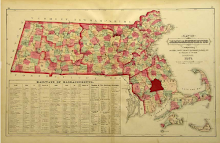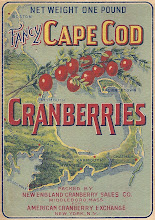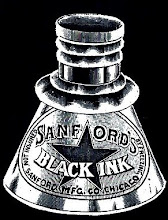 Up until the mid-20th century, the trapping of muskrats was common throughout Middlebororugh and Lakeville for a number of reasons. Historically, the animal which was common about wetlands and along streams had been considered a source of both food and fur. William Wood in his New England's Prospect (1634) mentions the "civet-scented musquash [muskrat] smelling ever". (The scent given off by the animal is used to mark its territory and is generally considered offensive by most people).
Up until the mid-20th century, the trapping of muskrats was common throughout Middlebororugh and Lakeville for a number of reasons. Historically, the animal which was common about wetlands and along streams had been considered a source of both food and fur. William Wood in his New England's Prospect (1634) mentions the "civet-scented musquash [muskrat] smelling ever". (The scent given off by the animal is used to mark its territory and is generally considered offensive by most people)..
While not much favored for food following the 17th century, muskrats continued to be trapped for their fur through the 20th century with the pelts being sold to dealers. Muskrat pelts were sought for their durability, as well as the waterproof nature of their fur. Local residents engaged in trapping the animal frequently as a means of supplementing their incomes.
 Another reason for the trapping of muskrats was that they were considered nuisances, burrowing through yards, rummaging in gardens, and disrupting the areas they habited. Particularly in Middleborough and Lakeville, cranberry growers were frequently concerned of the possibility of muskrats burrowing into ditch edges or undermining or even destroying their dikes. In March, 1912, one such muskrat was blamed for damaging a local dike.
Another reason for the trapping of muskrats was that they were considered nuisances, burrowing through yards, rummaging in gardens, and disrupting the areas they habited. Particularly in Middleborough and Lakeville, cranberry growers were frequently concerned of the possibility of muskrats burrowing into ditch edges or undermining or even destroying their dikes. In March, 1912, one such muskrat was blamed for damaging a local dike..
With the development of a local ice industry following the Civil War, ice dealers similarly came to regard the muskrat as a pest and they encouraged the trapping of muskrats as the maintenance of pure water in local ice ponds was critical for the production of pure, clean ice. During the late 1800s, numerous reports of sickness attributable to impure ice were recorded in New England, including, most notably, an outbreak at Rye Beach, New Hampshire, in 1875. “Many people believe that ice is always pure; that, in freezing, water is cleared of its impurities: which is partly true, as ice is always more pure that the water from which it forms. But there have been repeated outbreaks of sickness caused by ice taken from the surface of stagnant ponds containing large quantities of decomposing organic deposit: therefore we should be careful to secure our ice-crop from only pure sources.” [1881]
While such outbreaks were generally attributable to other causes, muskrats and other animals were also faulted for contributing to impure ice. One of the less savory tasks associated with maintaining pure clean ice was the trapping of muskrats which might compromise the purity of each season’s harvest. For this task, Middleborough ice dealer Ernest S. Pratt engaged Bob Jennings. As related by Lyman Butler,
[Jennings] told of his brothers getting jobs at icing time for Mr. Pratt but [Pratt] would not hire him as he wanted him to trap the muskrats which were inhabitants of the ice pond and were no asset to the natural pureness of the spring water. I guess that the many rats trapped here more than made up for any money that would be made working on top of the ice.
.
Today, while muskrats are still considered by some as pests, rooting through gardens near their lodges under the cover of darkness, Massachusetts has moved to restrict the use of certain types of traps which has undoubtedly led to an increase in the muskrat population locally.
.
Click on the video below to see a muskrat captured at dusk in Pratt's Brook at the Pratt Farm Conservation Area in Middleborough.
Illustrations:
Muskrat (Ondatra zibethicus)
Postal Card, January 10, 1910, from J. C. Davis of Buzzrds Bay, MA, to R. H. Tinkham of Rock, MA
The postal card was sent to R. H. Tinkham at Rock encouraging him to send muskrat pelts to dealer F. C. Davis at Buzzards Bay.
Muskrat in Pratt's Brook, video by Michael J. Maddigan, May 29, 2007






















+of+Smoky+Mountains+018.jpg)
0 comments:
Post a Comment